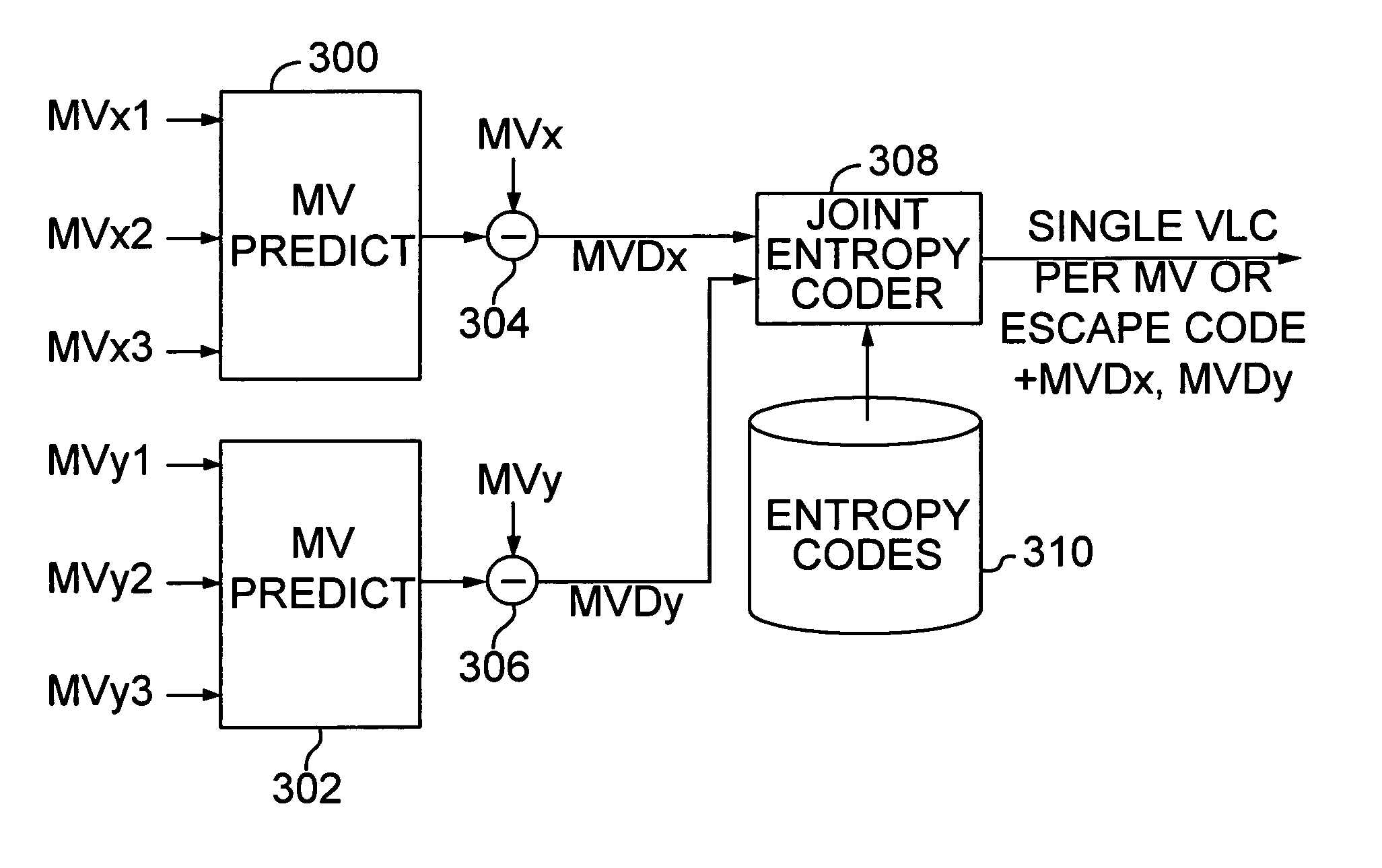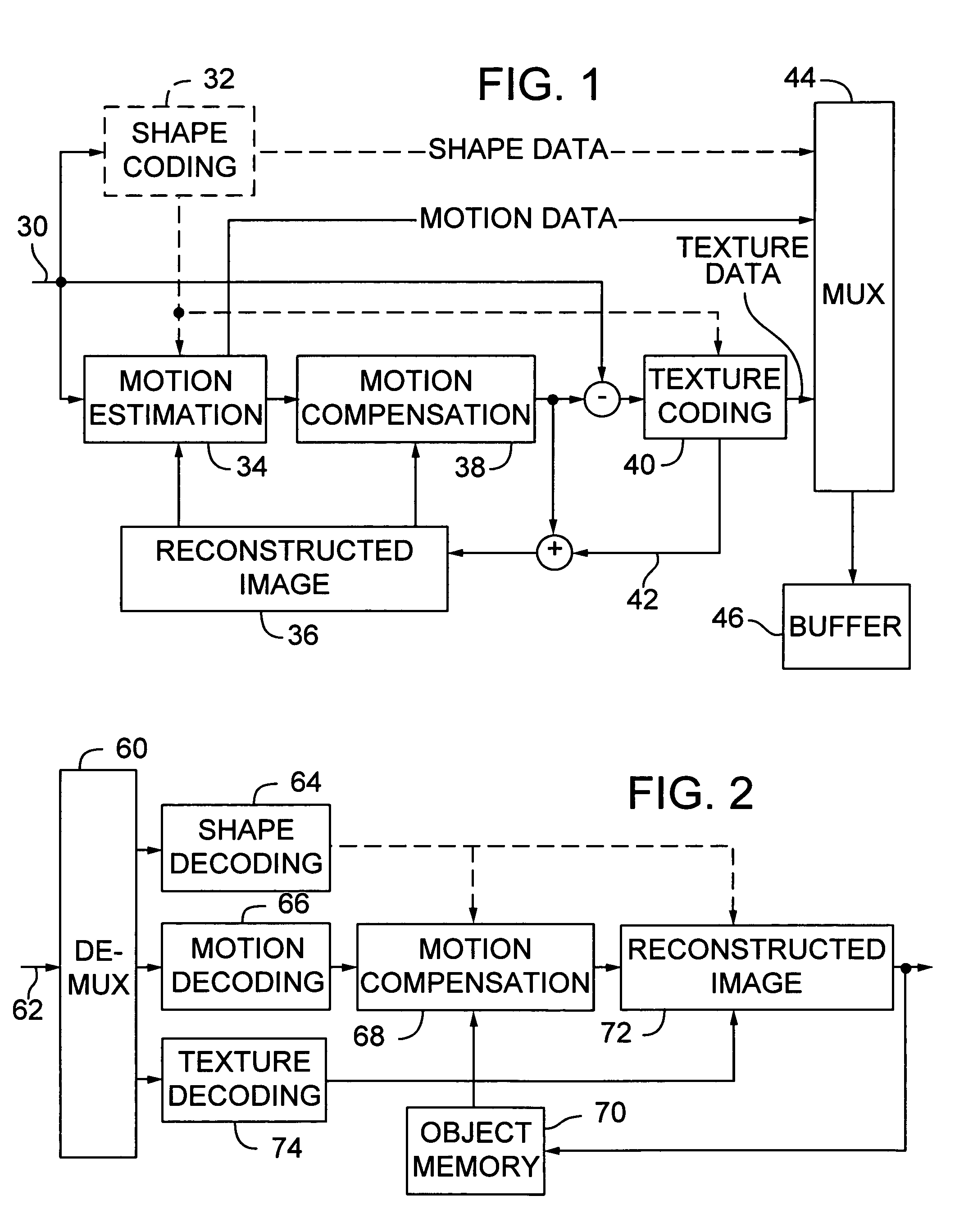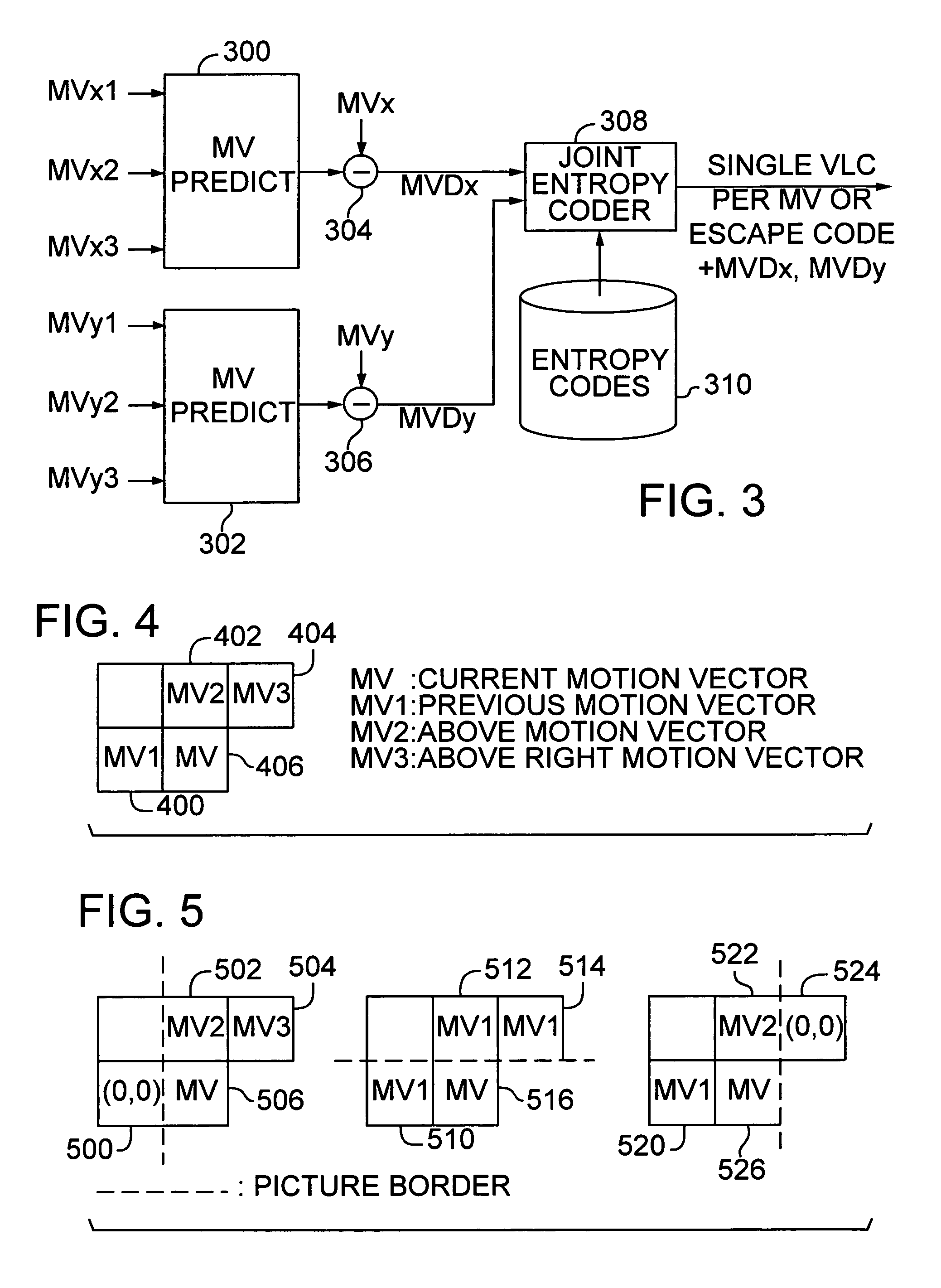Efficient motion vector coding for video compression
a motion vector and video compression technology, applied in the field of video coding, can solve the problems of inability to store and transmit these amounts of video information with conventional personal computer equipment, and the amount of raw digital information included in video sequences is huge, and achieve the effect of coding motion vectors more efficiently
- Summary
- Abstract
- Description
- Claims
- Application Information
AI Technical Summary
Benefits of technology
Problems solved by technology
Method used
Image
Examples
Embodiment Construction
Introduction
[0026]The first section below provides a description of a video encoder and decoder. Subsequent sections describe how to improve coding of motion vectors by exploiting the correlation between the X and Y components of the vectors.
[0027]This approach for jointly coding the X and Y components of a motion vector applies to both frame-based and object-based video coding. Both forms of video coding employ motion vectors to define the motion of a pixel or block of pixels from one frame to another. Typically, a motion vector is computed for regular sized blocks of pixels. In frame-based coding, the frame is divided into regular sized blocks. In object-based coding, each video object plane is divided into blocks. Since the object represented in a video object plane usually has a non-rectangular shape, object-based coders use the shape to determine which pixels in each block fall within the boundaries of the object. While frame-based and object-based coding differ in this respect...
PUM
 Login to View More
Login to View More Abstract
Description
Claims
Application Information
 Login to View More
Login to View More - R&D
- Intellectual Property
- Life Sciences
- Materials
- Tech Scout
- Unparalleled Data Quality
- Higher Quality Content
- 60% Fewer Hallucinations
Browse by: Latest US Patents, China's latest patents, Technical Efficacy Thesaurus, Application Domain, Technology Topic, Popular Technical Reports.
© 2025 PatSnap. All rights reserved.Legal|Privacy policy|Modern Slavery Act Transparency Statement|Sitemap|About US| Contact US: help@patsnap.com



